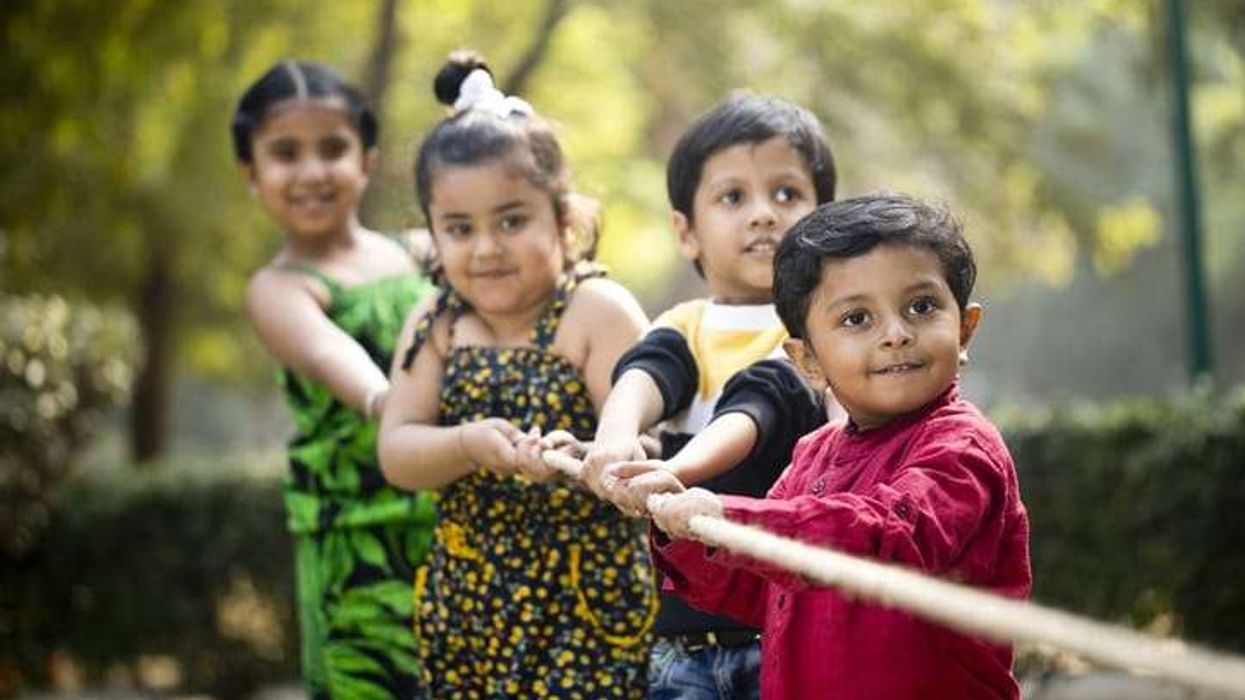By Asjad Nazir.
HE MAY have been concentrating on producing in recent years, but talented filmmaker Vipul Shah makes a welcome return to directing after eight years with big budget Bollywood film Namaste England.
Shah worked hard on the high-profile film. The colourful follow-up to his hit 2007 film Namastey London is a brand new story with Arjun Kapoor and Parineeti Chopra in the lead roles.
Despite being unwell, when Eastern Eye caught up with Shah to find out more, he was feeling happy about sharing the details of Namaste England.
What did you most like about Namaste England as a subject?
It is a film which people will be able to relate to. It promises to take us back to that world where dramatic complexities are created by cultural conflicts rather than emotional ones. The plot of the movie is intriguing. In this day and age, you cannot fool the audiences.Tell us more about the film?
Namaste England is a super fun and quintessential Bollywood romantic film, but it also carries forward a very strong issue I feel needs to be spoken about. The film has a young
and refreshing story that traces the journey of two individuals, Jasmeet and Param. It chronicles their love story across the landscapes of India and Europe.
Who are you hoping connects with the film?
The audiences love to see Arjun and Parineeti together and that they are able to relate to them and connect with their characters. The movie is a family entertainer and I am sure audiences will not be disappointed.
What was the biggest challenge you faced with Namaste England?
From Punjab to Ludhiana to Amritsar and all the way to Paris followed by Brussels and then to London, the entire movie has been a fantastic journey. The biggest challenge is that now I am unwell, and I am itching to join my team to get ready for the movie’s release next
Friday (19).
How do you compare this to your other projects?
I’ve been behind the scenes for some time now, experimenting with a lot of interesting content. I only wanted to direct when the right story came to me and I have that with Namaste England. I also wanted to reinvent myself, but I did not think that it would take eight long years. In between there were so many productions I didn’t want to direct, but I was super excited to come back to direction as I’ve always wanted that.
How have you changed as a director?
I think I’ve matured a little more as a director. Whenever I look back at my work I am completely disappointed with myself - whether the film is a success or failure. If I see Aankhen today, I can’t watch it and that’s for all my films. I only find mistakes in them. So,
I feel now with Namastey England, with a little more experience, my mistakes will be fewer.
Which is your favourite moment in the movie?
It is hard to pick just one, to be honest. The scale on which we have shot the movie –
across four to five different countries – it’s been truly an exhilarating experience. Every member of the team has put in a lot of hard work and tried their best to make a good film.
The camaraderie between Arjun and Parineeti is adorable, and when you watch the film you will see how wonderfully it is being portrayed on the big screen. As a director it makes your job so much easier when you have such a bundle of talent to direct.
How do you feel before your film is released?
I feel happy, nervous, anxious, excited. Of course, it’s natural to have a few nerves. As I said, we have put in a lot of hard work and effort and I personally cannot wait for the audiences’ reaction.
What kind of films do you enjoy as an audience?
I strongly believe content is king and as a filmmaker we are greedy for good content. I enjoy movies, which individuals can relate to and get inspired by.
Finally, why should we watch Namaste England?
The movie hopes to connect with people of all ages across the globe. The love and support we have received so far has been truly amazing. One thing I can promise is that you will leave the theatre with a smile on your face.
- Namaste England is in cinemas next Friday (19)











